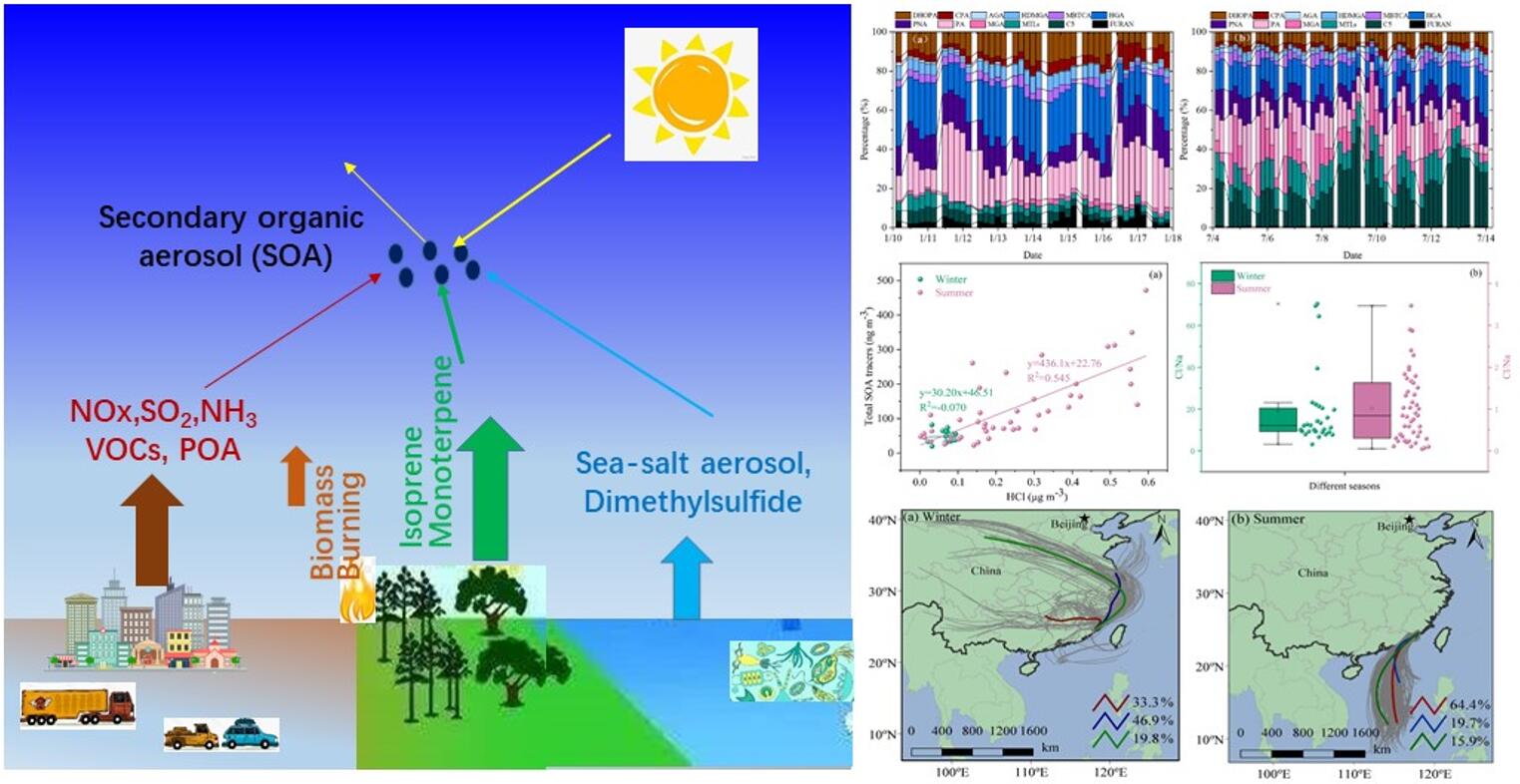| Location: Home > Papers |
| First Author: | HONG Youwei |
| Abstract: |
To better understand the formation of biogenic secondary organic aerosol (BSOA), aerosol samples with a 4 h time resolution were collected during summer and wintertime in the southeast of China, along with on-line measurements of trace gases, aerosol chemical compositions, and meteorological parameters. The samples were analyzed by gas chromatography-mass spectrometry for PM2.5-bound SOA tracers, including isoprene (SOAI), α/β-pinene (SOAM), β-caryophyllene (SOAC), and toluene (ASOA). The average concentrations of total SOA tracers in winter and summer were 38.8 and 111.9 ng m-3, respectively, with the predominance of SOAM (70.1% and 45.8%), followed by SOAI (14.0% and 45.6%), ASOA (11.0% and 6.2%) and SOAC (4.9% and 2.3%). Compared to those in winter, the majority of BSOA tracers in summer showed significant positive correlations with Ox (O3+NO2), HONO, ultraviolet (UV) and temperature (T), indicating the influence of photochemical oxidation under relatively clean conditions. However, in winter, BSOA tracers were significantly correlated with PM2.5, NO3-, SO42-, and NH3, attributed to the contributions of anthropogenic emissions. Major BSOA tracers in both seasons was linearly correlated with aerosol acidity (pH), liquid water content (LWC) and SO42-. The results indicated that acid-catalyzed reactive uptake onto sulfate aerosol particles enhanced the formation of BSOA. In summer, the clean air mass originated from the ocean, and chlorine depletion was observed. We also found that concentrations of the total SOA tracers was correlated with HCl and chlorine ions in PM2.5, reflecting the contribution of Cl-initiated VOC oxidations to the formation of SOA. In winter, the northeast dominant wind direction brought continental polluted air mass to the monitoring site, affecting the transformation of BSOA tracers. This implied that anthropogenic emissions, atmospheric oxidation capacity and halogen chemistry have significant effects on the formation of BSOA in the southeast coastal area.
|
| Contact the author: | CHEN Jinsheng |
| Page Number: | 7827–7841 |
| Issue: | |
| Subject: | |
| Impact Factor: | |
| Authors units: | |
| PubYear: | 16 Jun 2022 |
| Volume: | 22 |
| Publication Name: | ATMOSPHERIC CHEMISTRY AND PHYSICS |
| The full text link: | https://acp.copernicus.org/articles/22/7827/2022/ |
| ISSN: | |
| Appendix: |
